“Anne With An E”: Elucidating Light and Dark
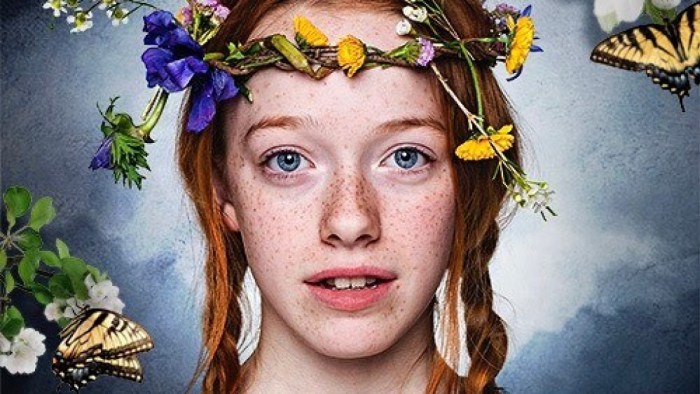
Netflix’s newest original series, Anne With an E, burst onto the scene a few months ago to mixed reviews. Some viewers heralded the arrival of a new Anne adaptation, while many others felt their beloved series had been butchered. Critics such as BookRiot’s writers call Anne With an E names like “Grimdark Anne,” while supporters applaud the more realistic and truthful tone of the new series. Determining who’s right is a challenge, and might be impossible. However, in looking at Anne from both angles, prospective viewers can glean plenty of fodder with which to inform themselves. Meanwhile, current viewers can find support for their stances, appreciate the other side, and appreciate the series itself as a new twist on an old favorite.
Anne’s New – Or Old – Dark Side
Speak to any Anne With an E viewer and they’ll quickly bring up the darkness of the Netflix series. The new tone is apparent before anyone so much as steps onto the screen. The series’ foliage and color scheme is significantly more somber than that of Anne of Green Gables, a Kevin Sullivan production made in the 1980s. Instead of bright spring greens, pristine whites, and friendly pinks or reds, viewers see blacks, grays, earth browns, and dark blues. This color scheme isn’t supposed to be unfriendly, but it does say, “Our Prince Edward Island is practical and serious.” The citizens of this PEI focus more on survival and tradition than imagination and whimsy, which becomes apparent when some of the main characters are introduced. The actors playing Matthew and Marilla Cuthbert, Rachel Lynde, and other Avonlea characters are dressed in sensible, dark clothing, with little makeup and simple hairstyles. Their dialogue is short and blunt. For example, Marilla makes no secret that a girl, especially one like Anne Shirley, would be of no use on the Cuthbert farm. Rachel Lynde uses prejudicial and skeptical language to describe orphans, while Matthew remains reticent but seems to blend well into Avonlea’s sober practicality. This version of Avonlea, one in which orphans are considered trash and children exist mainly to help with work, is not the same bucolic place that embraced our exuberant Anne Shirley in the 1980s films, or even in L.M. Montgomery’s original books.
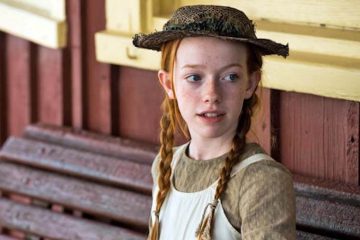 In other incarnations of her story, Anne turns the practical, staid Avonlea upside down with her arrival. Not so in Anne With an E, though. Anne certainly “pops.” Her brilliant red hair and curious loquaciousness are unlike anything Avonlea has ever encountered. She challenges everyone’s preconceived notions from day one. Yet in many ways, her arrival adds to the new Avonlea’s darkness. Amybeth McNulty, who portrays Anne, is younger and more innocent than Megan Follows, who portrayed the title character in Kevin Sullivan’s Anne of Green Gables. Thus, her devastation at being turned away from the Cuthberts is much more heart-wrenching. Upon hearing she isn’t wanted, Megan Follows’ Anne stares stricken at Marilla and whispers, “You don’t want me because I’m not a boy?” She’s clearly heartbroken, but maintains some dignity and control. In contrast, Amybeth McNulty’s Anne falls to her knees in front of Marilla and Matthew, sobbing and lamenting. The display is melodramatic, but drives home the harsh realism of Anne’s life. She’s seen as useless, more trouble than she’s worth. In the world of Anne With an E, she has little hope of a decent future unless Matthew and Marilla change their minds. She hasn’t fit in anywhere during her short life, and this latest prospect looks bleak. Perhaps most importantly, Amybeth McNulty’s Anne is blisteringly intelligent, but lacking in emotional maturity. Due to her age, she can’t process Matthew and Marilla’s initial refusal effectively. She’s resilient, but with this latest blow, her resilience might have burned itself out. Anne With an E provides an unforgettable portrait of what being an orphan truly looked like in Anne’s time period.
In other incarnations of her story, Anne turns the practical, staid Avonlea upside down with her arrival. Not so in Anne With an E, though. Anne certainly “pops.” Her brilliant red hair and curious loquaciousness are unlike anything Avonlea has ever encountered. She challenges everyone’s preconceived notions from day one. Yet in many ways, her arrival adds to the new Avonlea’s darkness. Amybeth McNulty, who portrays Anne, is younger and more innocent than Megan Follows, who portrayed the title character in Kevin Sullivan’s Anne of Green Gables. Thus, her devastation at being turned away from the Cuthberts is much more heart-wrenching. Upon hearing she isn’t wanted, Megan Follows’ Anne stares stricken at Marilla and whispers, “You don’t want me because I’m not a boy?” She’s clearly heartbroken, but maintains some dignity and control. In contrast, Amybeth McNulty’s Anne falls to her knees in front of Marilla and Matthew, sobbing and lamenting. The display is melodramatic, but drives home the harsh realism of Anne’s life. She’s seen as useless, more trouble than she’s worth. In the world of Anne With an E, she has little hope of a decent future unless Matthew and Marilla change their minds. She hasn’t fit in anywhere during her short life, and this latest prospect looks bleak. Perhaps most importantly, Amybeth McNulty’s Anne is blisteringly intelligent, but lacking in emotional maturity. Due to her age, she can’t process Matthew and Marilla’s initial refusal effectively. She’s resilient, but with this latest blow, her resilience might have burned itself out. Anne With an E provides an unforgettable portrait of what being an orphan truly looked like in Anne’s time period.
This portrait gets sharper and bleaker with each series episode. Marilla eventually agrees to take Anne on for a trial period, but Anne’s transition to Avonlea life is not nearly as smooth as in Anne of Green Gables, the book or the original film series. When Anne enters school, she’s immediately ostracized because she’s an orphan. Diana Barry tries to be her friend, but succumbs to peer pressure from classmates like Josie Pye. Although Diana doesn’t mistreat Anne as the others do, she becomes a silent bystander, which in modern viewers’ eyes makes her as guilty as the bullies. Meanwhile, Anne’s teacher Mr. Phillips is borderline sadistic. He doesn’t acknowledge or respect Anne’s academic prowess. Instead, he regularly humiliates her in front of the class, and assumes she is the root cause of many classroom problems – again, because she is an orphan. The most well-known example of this occurs when Mr. Phillips punishes Anne for breaking her slate over Gilbert Blythe’s head. Just though the punishment was, Mr. Phillips doesn’t simply hand it down in this version. He appears to enjoy punishing his new pupil. Later on, Mr. Phillips quietly encourages Anne’s ostracism after she innocently exposes his attraction to student Prissy Andrews.
Perhaps the darkest part of Anne’s new story lies in what Anne has experienced before Green Gables. In a pivotal scene, Anne frankly describes sexual activity and explains what she observed at the home of the Hammonds, former foster parents. She describes Mrs. Hammond touching her husband’s “pet mouse” regularly, and screaming during intercourse, such that Anne thought her foster mother was being injured. Additionally, Anne warns Diana and the other girls of innocent actions she thinks will get a girl pregnant, such as touching or kissing a boy. Many viewers, especially parents, find this dialogue appalling. They can’t imagine the wholesome Anne they grew up with knowing about “pet mice” and teen pregnancy. Moreover, these viewers don’t want their children exposed to the more worldly version of Anne. Viewers and critics alike have shut Anne out like her teacher, schoolmates, and the adults of Avonlea do. But viewers and critics forget if Anne Shirley were a real person, she wouldn’t be a typical innocent child. If anything, this Anne has much in common with today’s foster kids and orphans, most of whom grow up too fast due to hardships. In this, Amybeth McNulty’s Anne tells the truth, not only about sex but about life, in a way the old, sanitized Anne never could.
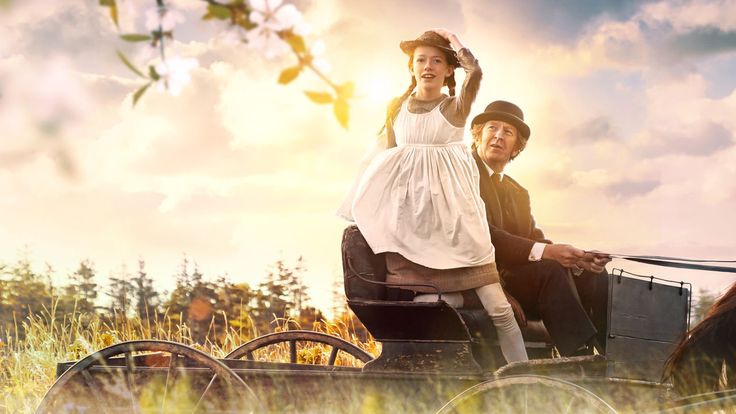
As Anne With an E elucidates grim but real truths, viewers are left with a thought-provoking question. Is this Anne’s new dark side as new as it looks? It’s certainly jarring, but maybe not as shocking or appalling as some viewers think. During Anne With an E‘s progression, there are plenty of flashbacks to her life before Green Gables. This Anne was verbally and physically abused, both at the hands of foster parents and residents of orphan asylums. She’s been locked in cellars, had gags stuffed in her mouth, and had her beloved books stolen. Mr. Hammond beats her in a flashback, and it’s implied this was one beating of many. When Anne finally reaches Avonlea, it’s not a refuge. The boys at school call her a dog and bark at her; the girls call her “dirty trash.” On more than one occasion, Anne displays post-traumatic symptoms.
At first, incidents like this jar us out of the story. Viewers might be tempted to turn off the television and declare, “No! This is not my Anne–I don’t want her or this series.” Yet getting to know this Anne makes it easier to sympathize with and root for her. Modern audiences know PTSD, abuse, and trauma more intimately than past generations, perhaps because the latest generations have been freed to talk openly about them. By elucidating these topics, Anne With an E provides another safe outlet for viewers to discuss them, whether or not they’ve endured what Anne has. The new Anne Shirley and her life give viewers the courage to say, “Yes. These horrible injustices that no child should experience existed then. They exist now, and because we’re free to speak of them, we have more power to stop them. We have the power to reach real kids like Anne and ensure they find safe havens. We can ensure they have happy endings and good futures.”
Anne’s Unexpectedly Bright Light Side
Someone once said the darker the night, the brighter the stars. This is definitely the case for Anne With an E, whose difficult truths and quasi-Gothic environment sometimes beg for light. Fortunately, the series’ creators more than oblige. The first hint of Anne’s lighter side comes from Matthew, who brings Anne to Green Gables from the Bright River train station. Like most Avonlea residents, Matthew doesn’t know how to take Anne at first. She talks incessantly, stands up in his wagon, and renames his horse. But although his reactions are understated, Matthew finds Anne amusing. Over time, he comes to understand what a breath of fresh air she is to Green Gables, and how delightful she can be. It’s Matthew who sympathizes with Anne when the latter insults Rachel Lynde; he recognizes Anne was hurt first and Rachel should’ve known better, although he gets Anne to apologize. It’s also Matthew who lobbies for Marilla to let Anne stay at Green Gables almost from day one. When Anne is accused of stealing Marilla’s brooch and runs away, devastated, it’s Matthew who takes off in the middle of the night determined to bring her back. When he succeeds, the series gets its first touching moment. It’s the first spot of hope that Anne could become a daughter to the Cuthberts and belong in Avonlea.
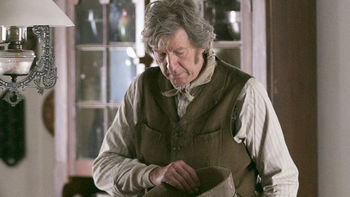
Anne and Matthew’s bond is only the beginning of the Netflix series’ brightness. Much of that brightness comes from Anne herself. Her elaborate imaginings feel overblown, but viewers can’t help smiling when she calls herself “Princess Cordelia” and waltzes around her bedroom. Her temper gets the best of her at times, but viewers cheer when she stands up for herself and others without losing complete control. She’s not the quiet, well-behaved child Avonlea holds up as an ideal, but her constant questions and musings challenge the adults to think differently about what they’ve always accepted. Thus, Amybeth McNulty’s Anne is not unlike the L.M. Montgomery or Megan Follows Anne so many of us grew up loving and befriending. If anything, the series’ focus on the new Anne’s tribulations make the character seem more innocent and sympathetic than before.
The creators of Anne With an E also brighten Anne’s story with conscious choices to develop her character. In a pivotal incident unique to the Netflix series, Anne is at hand when the Gillis home begins burning. Everyone else, including Matthew and Marilla, are panic-stricken. They rely on old-fashioned methods to stop the fire, such as opening windows. Anne, however, insists the windows must remain closed. “Fire feeds on oxygen,” she explains. It turns out the only thing she had to read in her orphanage was a fire safety manual, and the knowledge she gleaned has stuck in her head. L.M. Montgomery’s original books and Kevin Sullivan’s film made clear Anne was brilliant. However, we didn’t often see that outside of schoolwork and academic competitions. Here, Anne’s keen mind serves her in an urgent, real-life situation, and turns the tide of Avonlea’s attitude toward her. Even when she’s no longer hailed as a hero, she’s respected and listened to more often. Her classmates see her as courageous and smart, while the adults begin to understand she has useful gifts that could help them later.
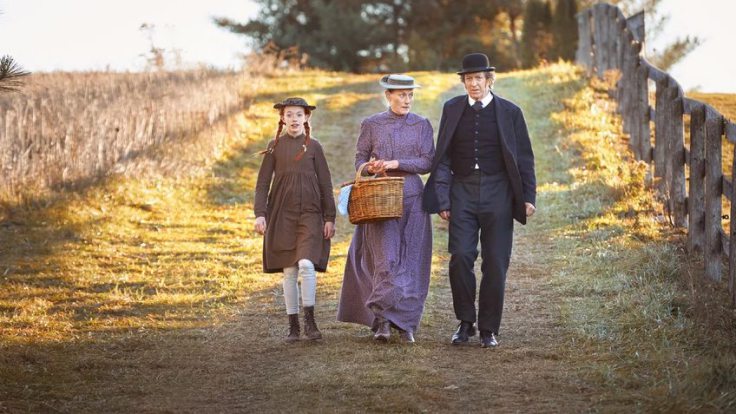
Anne gets some further encouraging character development regarding her relationship with Gilbert Blythe. As in original incarnations of the story, they meet because he teases her about her red hair – a real sore spot – and she in turn breaks a slate over his head. But from that point, Anne and Gilbert’s trajectory changes; it almost does a complete 180. In the original books and film, Anne held a grudge against Gilbert for years. In Anne With an E, she still holds that grudge, but it’s not as fierce as in other adaptations. For his part, Gil determines to become Anne’s friend rather than nursing a schoolboy crush from afar. He becomes one of her greatest school allies, thwarting his friends when they call Anne a dog and try to assault her. The two engage in cutthroat academic competition, but outside of that, Gil seems willing to help Anne catch up to the other students and build her self-worth. Anne isn’t entirely comfortable with Gilbert; all signs point to her developing a crush she isn’t sure what to think of. But in Anne with an E, she responds to him maturely, if awkwardly. She expresses empathy when Gil’s father dies because she knows exactly what it’s like to be an orphan. Unlike previous Annes, this Anne tempers her rich fantasy life with strong doses of reality when needed, which makes her seem stronger and better grounded socially.
Anne’s empathy and self-sacrificial nature blossom near the end of the series. In the final episode of Season 1, viewers learn the Cuthberts stand to lose their farm after a disaster at sea impacts Matthew’s investments. Matthew and Marilla try to hide the truth from Anne, but she is too accustomed to hardship for that to work. Almost as soon as she learns what’s going on, Anne steps up to help Marilla. She goes to a local pawn shop by herself to sell some valuables, and her fantastic stories about each piece actually convince the pawnbroker to buy them. Additionally, Anne uses her “head for numbers” to help Marilla make sense of confusing accounts, and to calculate how much money it would take to save the farm. Anne does fear the Cuthberts will return her to the orphanage because of their financial trouble; in fact, she’s terrified and expresses that to Marilla in her signature dramatic way. Yet once Marilla assures Anne her adoption will stand, our heroine goes right back to focusing on others and how she can change the greater situation. The “old” Anne of Sullivan and Montgomery was certainly sympathetic, but arguably didn’t develop empathy until her teen and adult years. She was far too busy striving to create her perfect life, full of “bosom friends,” true love, “tragical” circumstances, and puffed sleeves. Netflix’s new character learns at twelve what most real people don’t learn until their twenties – it’s tough all over, but sticking close to loved ones, and supporting them, can help improve difficult situations.
The Final Verdict
Anne With an E is definitely not a lighthearted “family” series. New viewers may choose to keep their youngest children away, or skip certain parts or episodes. To new viewers, Anne With an E might indeed look like a grim horror story. L.M. Montgomery has been quoted as saying she didn’t delve into the dark side of being an orphan during Anne’s books because she wanted readers to enjoy Anne’s stories. They were meant as an escape instead of an exact portrait of what real Canadian orphans experienced at the time. Kevin Sullivan’s 1980s movies take their cue from Montgomery’s intentions. They focus on the elegant, rich, and “proper” side of Anne Shirley’s existence, not the difficult, heartbreaking, and downright traumatic parts. With this in mind, plenty of viewers find the new version of Anne’s story off-putting, if not repugnant.
However, Anne With an E is not meant to plunge viewers into endless gloom and doom. Within L.M. Montgomery’s original work exists the foundation for the Netflix series’ tone, although it’s not directly tied to Anne’s books. Montgomery did explore the difficulty of being an orphan, especially a female one, in her later work Emily of New Moon and its two sequels. This trilogy pulled back the veil on the truth of Canada’s sociopolitical landscape at the time – girls and women were given few or no rights of their own, and their futures were largely left up to fathers, brothers, and husbands. An orphaned girl with neither guardian nor prospects for a husband would struggle in such a conservative, traditional society. Yet, Montgomery hints, Canada wasn’t ready to admit any of this at the time. Women’s rights were slowly gaining ground, but many Canadians did not want anything to tarnish their view of their nation. Canadians, and perhaps the world, believed Canada was an idyllic country where fairness and equality were the norm. Works like Emily of New Moon would have called that into serious question. Perhaps this is why the Emily books are not read nearly as widely as the Anne books. Many people, even ardent Montgomery fans, are not aware of them, and they have only received one adaptation, a television miniseries. Perhaps Canada and those looking at it from the outside would prefer to think of it as the original Anne Shirley or Megan Follows’ Canada. Anne With an E refuses to let viewers from any nation do this.
Using the foundations of truth regarding how Canada has treated its orphans and females, Anne With an E strikes a thought-provoking balance between the real and the ideal. Those watching the series cannot escape into it as they could into Kevin Sullivan’s Anne of Green Gables. They can’t turn off the television and walk away without facing some thorny questions about the characters’ actions and their own humanity. Yet maybe this is what the series’ creators meant to let happen. Anne With an E forces viewers to think, not just mindlessly watch television. It also encourages them to remember that life’s light goes out sometimes, but never remains extinguished forever. If Anne With an E keeps these goals in mind during future seasons, it will become as beloved an adaptation as its predecessor. It might even surpass Kevin Sullivan’s films, and get people talking about how to bring both truth and light to adaptations that haven’t yet been explored.
What do you think? Leave a comment.
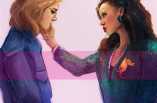
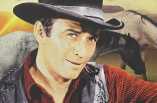




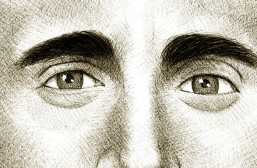


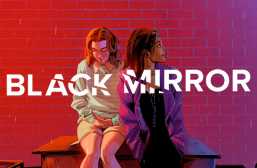

I was just in Canada for a few weeks, and I saw the last few episodes. (While I missed the first few, I wasn’t as bothered by this as I would be for most series, as I know Montgomery’s books and the 1980s series very well.
I wasn’t too happy with it overall. I thought the acting was good, but the whole perspective was far too modern. The characters use a lot of modern expressions (“whatever”, etc) in their dialogue, which was jarring. I won’t put spoilers here, but in the last episode one of the characters made a decision that was appallingly out of character and out of the spirit of Montgomery. That kind of finished it for me. There was also a whole lot of unnecessary melodrama which seems to be so that they can spin it out into a few series.
I felt as though the show was sort of along the lines of spelling everything out. Sherlock ended up doing something similar. In the books you learn about Anne and her difficult background gradually but there isn’t a whole bunch of foregrounding of trauma and drama. Does everything have to be spelled out and made explicit for modern audiences? Are we not trusted to interpret things for ourselves? I don’t really get it.
I had thought that I might want to go back and watch the first few episodes but despite the good performances, I really was disappointed with the overall approach and I’m not sure I will bother. I am a big fan of all (or most) of Montgomery’s books (including the much less well-known non-Anne books, such as the Emily trilogy) and of the 80s series so I daresay that did make me more critical. Someone unfamiliar with the originals would probably enjoy this more. My conclusion was that it was ok, but it wasn’t really Anne.
And it’s not as if LMM didn’t write loads of books about people on Prince Ed Island, so there’s loads of material to use if they wanted a flipping series.
I don’t hold with buggering about with these brilliant books. Film the story as LMM wrote it, otherwise call it something else.
“the last episode one of the characters made a decision that was appallingly out of character”
Yes, that rather jumped out at me out of nowhere and did somewhat spoil the magic of the last episode.
My only other tiny criticism of what I thought was a wonderful short series was that the characters of a couple of the school girls was rather cliched.
I must watch it now. It is my childhood favourite, so I am intrigued.
Read the book when I had my daughter and all but wept at its perfection. How could any adaptation come near to it? I don’t know if I’ve got the nerve to try this.
First time in ages we have sat down as a family and enjoyed watching the same series. From me (grumpy 50 something bloke also enjoying Last Tango in Halifax) to my know it all 16 yr old daughter who had just finished watching Orange is the New Black.
I have not seen it, but you make it sound like it has the underlying aim of making us question how our society treats orphans and those who have been neglected in some way.
@Henry: That’s probably not its only aim, but tackling the issue of how modern orphans are treated is certainly on their agenda.
I am SO nervous about watching this. Anne with an E has been with me now for 30 years.
Growing up, I watched the version with Megan Follows to death, and I still adore it. It’s just so damn sweet without ever being cloying. Richard Farnsworth as Matthew was devastating… I can’t even think about The Puff Sleeves without welling up. And Anne and Gilbert make for one of the greatest love stories of all time – “I don’t want sunbursts or marble halls; I just want you” – gaaah! He loves her from the get-go, for who she is, but she goes out into the world, succeeds at work, and acquires true self-knowledge before coming to love him back wholeheartedly. That was so satisfying and, for the time in which Lucy Maud Montgomery was writing, supremely feminist.
This adaptation has a tough act to follow but I’ll give it a whirl…
Agree, and Colleen Dewhurst is unsurpassed as Marilla. What she could convey with just a lift of an eyebrow or a roll of an eye!
Don’t do it. Moira what’s-her-face, who adapted it, is definitely NOT a kindred spirit! Stick with the miniseries.
We’ve watched the whole series on CBC and loved it. My 12yo utterly enthralled, LOVED Anne, and was so thrilled / mortified by the gradual unfolding of Gilbert’s perfection that she twice had to run from the room to avoid exploding with excitement. ‘No boy will ever live up to Gilbert’ has become a household catchphrase. She’s watched many a box set on netflix, incl those aimed at an older audience, and none of them matched her Sunday night joy when the next Anne was due. ‘I can’t explain it, I just love her.’
I need to see this! But I don’t have Netflix – woe.
So now funny, optimistic, imaginative Anne Shirley has to be reduced to a traumatised 21st century snowflake? Spare me!
I’m inclined to disagree, but I understand why she might come across as too 21st century for a lot of people. You actually bring up an interesting question of whether producers, directors, etc. are too bent on making historical content friendly to modern audiences, and therefore, make it unrealistic.
I don’t think that “snowflake” is the term I’d use, but I would go so far as to say that this Anne Shirley is definitely traumatized and bogged down in ways that the original character isn’t. Anne Shirley isn’t Pollyanna, but she also isn’t (and this is the way the character is coming across to us while we watch) manipulative and self-centered.
The abuse Anne experienced was implicit in the experiences she had; we all knew had had a terribly sad life, but she was buoyed by enthusiasm and hope. This version presents a girl who is bogged down by her experiences, and her attitude seems to border on the manic. Diana Barry, in this version, made me think of the girls in Picnic at Hanging Rock…
Yes, they’ve tried to “update” the story to be more “of our time,” but Anne wasn’t written as a girl of our time; she was written as a girl of hers. We agreed to stop when we realized that the second episode was not an improvement on the first…the kid calling out that scientists predict global warning, and Matthew walking around looking at the redheaded girl with the braids just felt horribly stilted…
I definitely agree that to place issues like global warming in the L.M. Montgomery universe is historically and creatively inappropriate. For that matter, Anne’s embrace of what is basically modern feminism seems anachronistic, too. Naturally, she would stand up for herself when the Cuthberts insist they want a boy. Naturally she would try to show them she can be as useful as a boy. But I don’t think she needed to go on a rant about how girls can do anything boys can, girls are no different than boys, etc. For her time period, that was neither accepted nor entirely true.
With that being said, I don’t think Anne is entirely self-centered. Yes, as I pointed out, her imaginings are overblown. You could call her manic, yes. A lot of that stems from her PTSD-driven behavior, which again…is that anachronistic, too? I don’t know. But I do think this series gives Anne more opportunities to grow from a self-centered kid into a *developing* version of an other-centered person. She’s definitely not there yet, but I still argue she’s much more in tune with the real world than Megan Follows’ Anne was. I love Megan, do not get me wrong. She’s gritty and realistic in her own way. I just wonder if Amybeth McNulty’s version isn’t the better representation of a realistic twelve-year-old.
It was the reality of life in those times. Orphans were used and abused. They were seen as trash. This is the time of the workhouse, a time of poverty unless you were wealthy. It is quite revolting to call someone that was abused a snowflake. Anne Shirley was always psychologically damaged, it is why Anne daydreams.
Why she was so intense about being top of her class.
Yep, abused child = snowflake. Tell you everything you need to know about people who enjoy that particular term.
I’m not a fan of the term either, for those and other reasons.
Watched it all when it was shown in Canada, and, despite initial fears, loved it. A shout-out to Geraldine James, RH Thomson (Matthew), and Corinne Koslo (Rachel Lynde), who give old clothes new life. We don’t need another version like the wonderful 1985 one; this demonstrates that remakes can be good!
Bingeing Anne all day now, thanks for the recommendation!
I wonder if the people saying they liked this, have ever read the original series? This production was a complete travesty, riddled with melodrama, inconsistencies and total distortion of character. The first episode started off promisingly, then rapidly degenerated into a pile of gratuitous, cackhanded butchery of the very spirit that made these books unique. If you love Anne, for your own sake, don’t watch this.
Absolutely untrue. ‘Anne with an E’ far surpasses any earlier adaptation of Montgomery’s books. It is marvellously paced, oozes intelligence, administers healthy doses of both sadness and humour, delights the eye, and uplifts the soul with superb acting. I have never spent more satisfying hours in front of a television screen.
I have seen the original series and always loved it. I have read all the books more than once. I love this new version for being fearlessly honest about the life of an orphan, the things the endured and the extreme prejudice they suffered. In was hinted at in the books. She was badly abuses and a maladaptive daydreamer. She was super sensitive, different. In the books her first child is still born, Ruby dies of consumption and another son dies in WWI.
Just finished watching this with my wife and 17-year old red-headed daughter.
Wonderful, touching, emotional. All three of us reaching for the tissues.
Beautifully filmed. Anne is indeed superbly played by Amybeth McNulty. Her performance being crucial because the whole thing hinges on it. She manages to walk the very fine line between annoying and wooden.
Great article. Quite spot on!
Didn’t see this one coming – it really is wonderful.
Not sure that I am brave enough to displace the Anne of my imagination with a ‘Real’ one – didn’t watch the TV series for this reason. Dilemma. The Anne of Netflix certainly LOOKS like my Anne…..however would my Avonlea be recreated? Oh Dear. Also, not too keen on a darker Anne – although understand exactly the reasons for such an addition.
Great article in sparking a lot of debate. Thanks for highlighting the series. Perhaps the show moves from the letter of the law with Anne to keeping the spirit of Anne.
Genuinely impressive. Made more so by the extraordinary performance of Amybeth McNulty . The title sequence and song by The Tragically hip is not half bad either.
I am an Anne with an E. Was christened it at school, and still referred to as such at the age of 56….
I have been wondering if I should watch Anne with an E or not since I saw it come across my Netflix suggestions and after reading this article I definitely think I am going to take a gander into the world of Anne with an E, so thank you for helping me make that decision!
Glad to help! I think you’ll like it; I’m anxiously waiting for Season 2.
Given what I have read, this is much heavier than the average Anne of Green Gables storyline.
You nailed it. This essay is very well written and having never read the original book or seen the earlier film adaptation, I appreciate the comparative analysis. I absolutely loved Anne with an E for its bold depiction of the many social issues that we still face today.